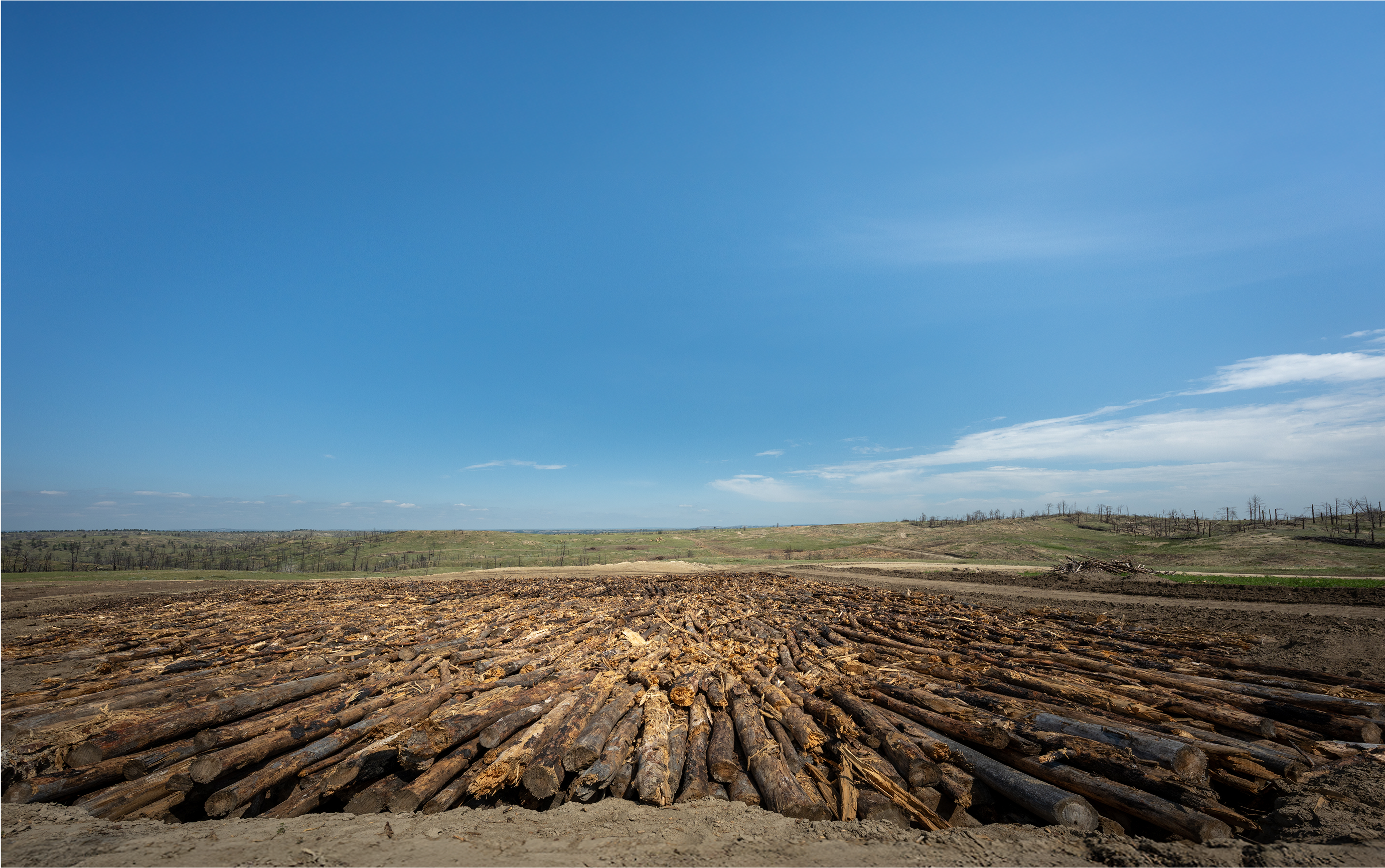
Every burned log has been loaded into our project site in Montana. The installment of the cap materials is now underway—engineered to keep the chamber stable and dry for at least the next century. This is a huge milestone for our Wood Preserve MT1 project and a big step forward for the expansion of CDR via terrestrial storage of biomass.
As we complete this major milestone, we’re thrilled to announce that MT1 is now listed for pre-sale on the CEEZER’s platform, connecting corporate buyers with rigorously vetted carbon removal projects to efficiently manage credit portfolios for optimal impact.
MT1 is CEEZER’s first BeZero-rated North American biomass burial project and is currently the market’s only project generating removal credits from burying hazardous burned wood while funding reforestation of the same landscape. MT1 is on track to be one the largest hybrid CDR deliveries this year according to CDR.fyi.
Mast Wood Preserve MT1 has received a BeZero Carbon Rating of ‘Apre’ with low project execution risk, underscoring the project’s high integrity and well planned operations. This pre-issuance rating ranks MT1 alongside the top 8% of non-nature-based projects globally, compared to BeZero’s ex-post ratings, and reinforces its standing as a leading CDR offering in the voluntary carbon market. The full report is available upon request: carbon@mastreforest.com.
This carbon removal project is engineered for durability, with the same co-benefits sought through nature-based solutions. We’re restoring a wildfire scarred landscape back to the ponderosa pine forests and grasslands that were present before the fire.
July 28, 2025: Thousands of tons of biomass has been placed in the chamber, which has reached the 20' brim.
What's hybrid CDR? Environmentally restorative carbon removal engineered for durability. Our burned biomass burial project sits in this sweet spot, a “promising blend of affordability, permanence, and co-benefits” - Rubicon. The market is increasingly talking about the efficacy and scale of this solution—most recently in Nature/TheHill.
“Burying [wood debris] is the most effective and the least expensive, and possibly the most sustainable way to capture carbon. There's huge potential."
— Yiqi Luo, Cornell University, Nature Geoscience
Sophisticated, yet simple. Real impact happening now. Since mid-June, Mast Reforestation’s ground team has been skidding, weighing, sampling, and loading unmerchantable logs into our wood burial chamber. On track for CDR credit issuance by Q1 2026.
In the short video below, Mast's VP of Forest Carbon Development, Lisa Gonzalez-Kramer, takes a moment to appreciate the wild roses and then digs into a few of the details that make this project so sound.
🎥: Montana KRTV’s David Jay joined us onsite on June 6, 2025 with a featured segment airing multiple times and featured in their Ag Network which has raised local interest aiding our expansion with additional projects. If you're a wildfire-affected landowner reading this, we are happy to discuss your options for restoration.
Thanks to KTVQ’s David Jay for joining us to tour the project in action. Watch the full 3-minute segment.
What’s next in Montana?
By August 11th, we’ll begin MRV in preparation for credit verification and issuance in January 2026.
And, the new seeds for the first phase of reforestation are already growing at Silvaseed, our nursery based in Roy, Washington, for planting next spring. Every new seedling like this ponderosa pine, growing for MT1, is a miniature (for now) part of a mighty comeback story on this land that was destroyed by severe wildfire in 2021.

The land surrounding MT1 is biologically rich, and we look forward to restoring it as vital habitat for native wildlife—while equipping the landowners to steward it as their family had for generations before the fire.
In the meantime, we appreciate the patrons of the local watering hole stopping by to inspect our work at all hours of the night.
April 2025 — A herd of elk grazes near the chamber site, captured by a Mast trail cam.
The restoration of the land surrounding our project site is the special sauce that Mast brings. Reforestation will revitalize this landscape, without relying on future carbon credits to pay for it. This is sound, efficient carbon removal that is taking place right before our eyes for all to see. We’re sharing the progress on LinkedIn as it happens and encourage your questions!
We're also proud to include local equipment operators and forestry experts on our team. Four years ago, Cody, shown in this video clip below, was fighting the very same fire that swept across the county. Today, he's an integral part of the story as we bring the land back to life.
Note the red LED readout and manual transcription, used to ensure each log is weighed before being moved to the chamber.
Mast has always offered an unbeatable story of restoration and recovery, but this evolution to engineered CDR is a massive level up, and absolutely critical to finance reforestation on the pace and scale needed.
This pathway is built upon the learnings of the CDR pathways before us. We’re proud to have reached this point.
“Corporate net zero targets cannot happen without scaling CDR, and CDR cannot scale without offtakes. Supercritical's view or the market shows 62% of high-quality biochar capacity for 2025 is already locked up."
— Supercritical Biochar Offtakes Report, 2025
Mast’s mission continues. We thank you for your interest in making a difference with us.
Follow us on LinkedIn for more frequent updates and connect with our team to get this project in your carbon removal portfolio.
